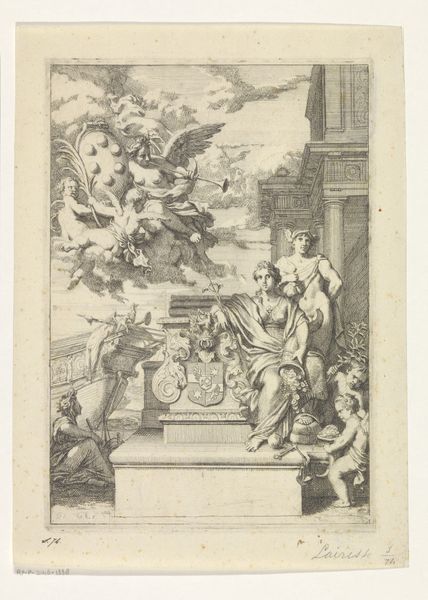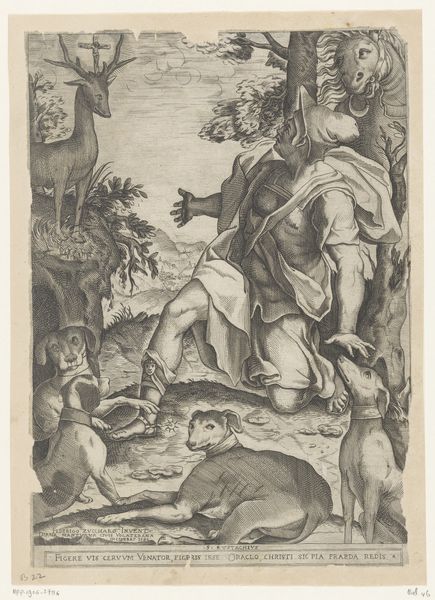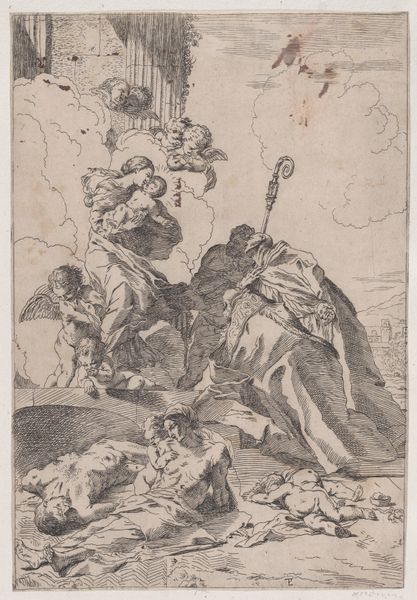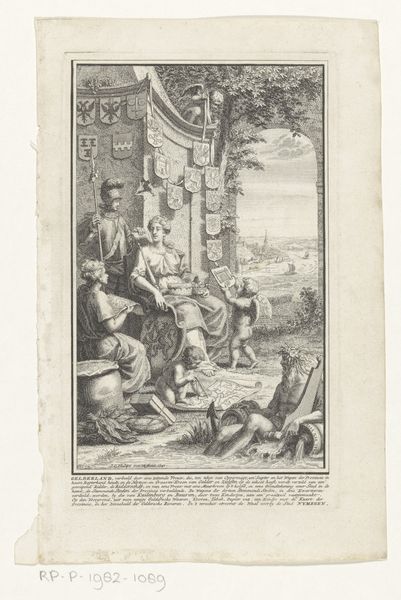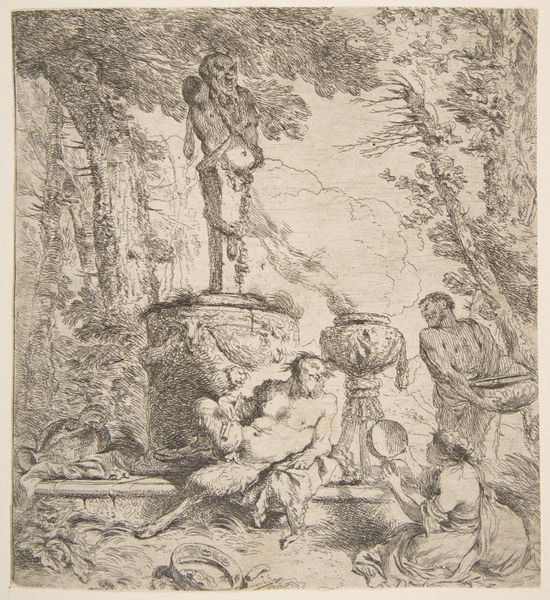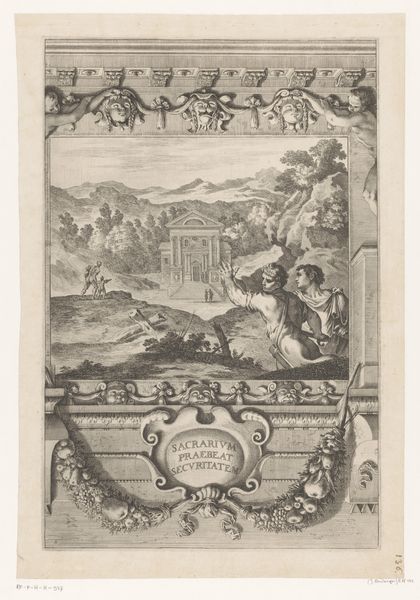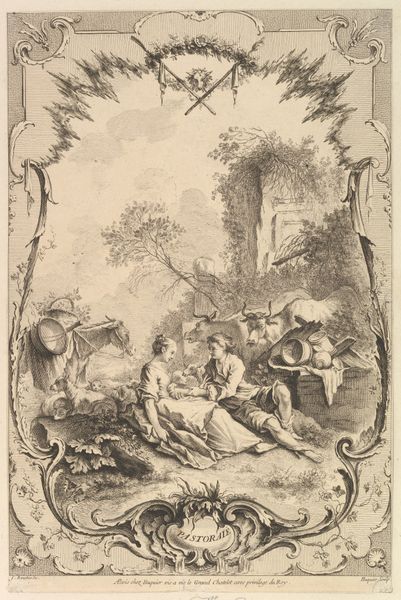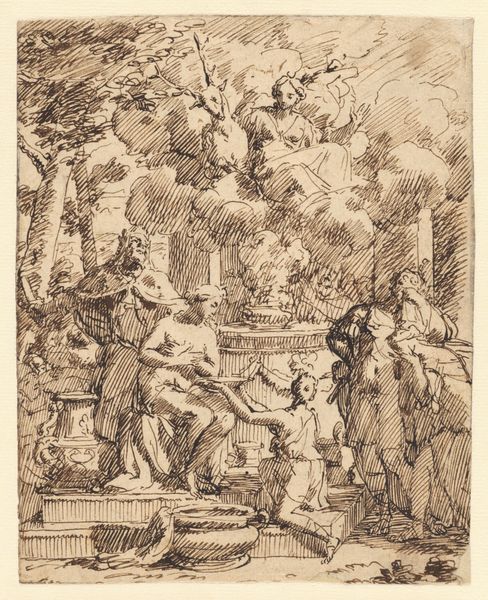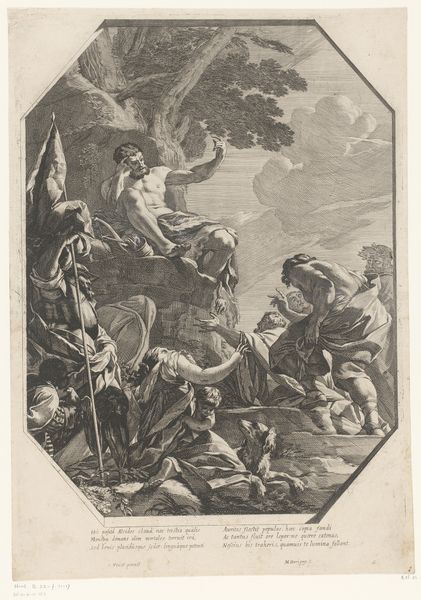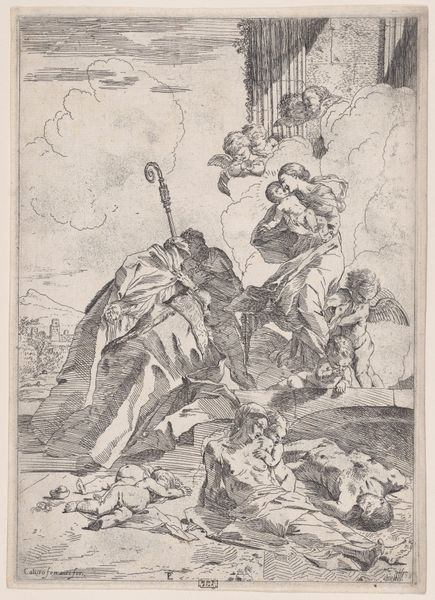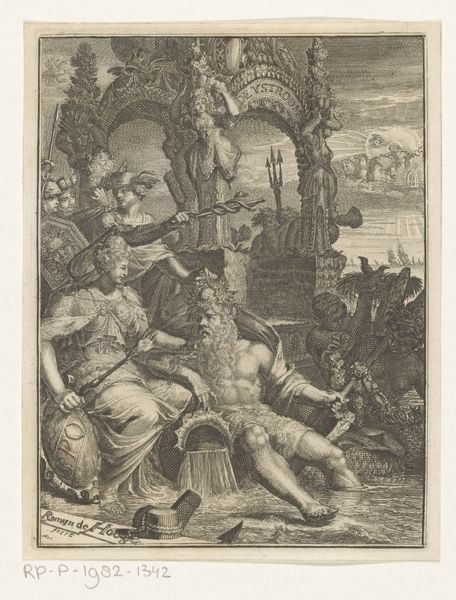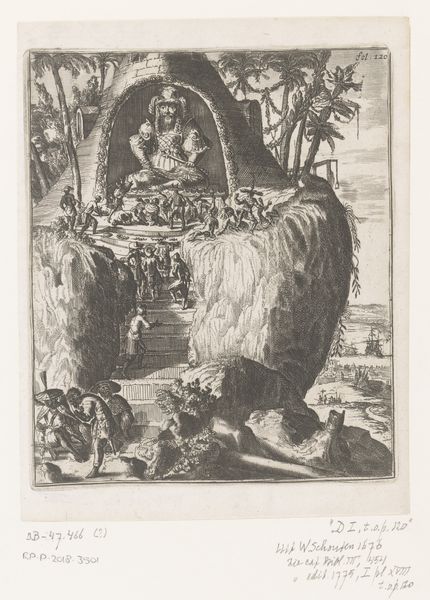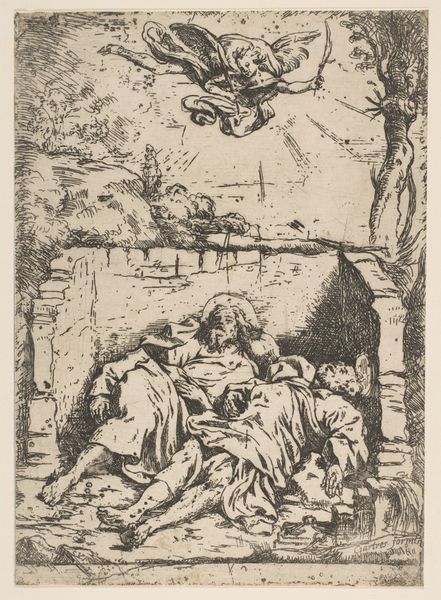
print, engraving
#
baroque
# print
#
landscape
#
figuration
#
genre-painting
#
history-painting
#
engraving
Dimensions: height 329 mm, width 249 mm
Copyright: Rijks Museum: Open Domain
Curator: This etching, titled "Slapende herder bij zijn kudde schapen bij antieke ruïnes" by Johann Heinrich Roos, dates back to 1664. Its composition gives a fascinating look into how Roos interpreted the pastoral tradition through the lens of antiquity. Editor: My immediate impression is one of tranquility, a scene steeped in stillness. The soft rendering and detailed lines that Roos uses almost gives a three-dimensional form to a two dimensional surface. The etching really shows a depth of space. Curator: Absolutely. Beyond its aesthetic qualities, it invites consideration of class and labor. The sleeping shepherd becomes symbolic of the working class and rural life idealized in art, in the broader historical context. Editor: The composition is striking. Notice the careful arrangement—the sheep clustered together, their wool rendered through fine, repetitive lines that build a soft, textured effect. And that large vase next to them. Note how the vase anchors the upper-left quadrant, balanced by the figure and hillside receding in the right. Curator: Yes, and Roos was indeed embedding commentary here. The contrast between the grandeur of the ancient ruins and the humble occupation of the shepherd could be interpreted as a social critique, a commentary on the inequalities inherent within the societal hierarchy. Editor: The engraving highlights are meticulously placed. They catch the light just so to illuminate the forms—making us notice, as well, the almost rhythmic repetition of the curves and lines of both animal fleece and flora alike. Curator: Indeed, the level of detail is compelling! It certainly makes one contemplate the historical forces that propelled such idealized visions. It urges viewers to examine these depictions within their broader political and socio-economic conditions. Editor: In scrutinizing these fine elements and structure, this landscape composition reveals just how Roos guides our eye. It demonstrates just how form guides the viewer through the narrative he's crafting, too. Curator: Precisely! And reflecting on its social and political roots really changes the way one can look at this scene. Thank you, both views enhance a full perspective! Editor: A fulfilling contrast, allowing one to grasp better just how carefully he balances light and texture here to compose this piece.
Comments
No comments
Be the first to comment and join the conversation on the ultimate creative platform.
